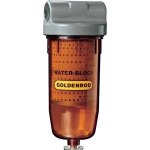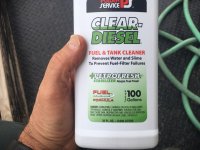Here's what we were taught in flight school: Jet fuel and diesel will feed microbes which are introduced to the fuel tank as fuel is consumed in the "ullage" (that's the air in the tank above the fuel). When the tank walls cool (such as at night or when the outside air temp changes) water will condense on the tank walls and run down eventually ending up in the bottom of the tank (water is heavier than the fuel.) The microbes live in the water. They eat the fuel. They defecate wastes that becomes a gelatinous-mass which will clog filters and cause corrosion in almost all metals. It can also damage fuel injectors.
Preventive treatments are available (we used JB Biobor in jets, which was a 20-Mule Team Borax product) which is added to the fuel during re-fueling. If an infection is already present the treatment should be increased in concentration per the product-labelling (being agitated by adding the product to the fuel during forceful re-fueling) and allowed to remain for 48 hours. The additive should be diluted in concentration in accordance with the engine mfr's recommendations by adding more fuel after the waiting-period. (In the jets I flew, the concentration for an existing infestation was 270 PPM (a "shock" treatment) and then it was diluted to 135 PPM for flight.) A preventive treatment was put into the tanks during re-fueling about once a month after the "shock" treatment was performed to prevent re-infestation. I am a newbie to diesel tractors (having lived until now on gasoline) and if i begin to store diesel I plan to keep my fuel stored with the preventive product at the lower concentration to prevent an infestation from becoming established.
Hope this helps.

